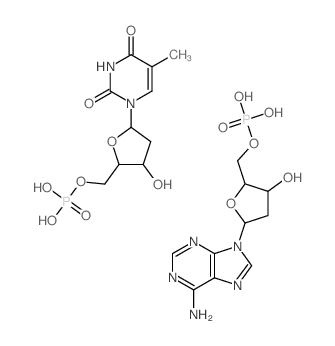Homopolymer tract length dependent enrichments in functional regions of 27 eukaryotes and their novel dependence on the organism DNA (G+C)% composition.
Yue Zhou, Jeffrey W Bizzaro, Kenneth A Marx
文献索引:BMC Genomics 5 , 95, (2004)
全文:HTML全文
摘要
DNA homopolymer tracts, poly(dA).poly(dT) and poly(dG).poly(dC), are the simplest of simple sequence repeats. Homopolymer tracts have been systematically examined in the coding, intron and flanking regions of a limited number of eukaryotes. As the number of DNA sequences publicly available increases, the representation (over and under) of homopolymer tracts of different lengths in these regions of different genomes can be compared.We carried out a survey of the extent of homopolymer tract over-representation (enrichment) and over-proportional length distribution (above expected length) primarily in the single gene documents, but including some whole chromosomes of 27 eukaryotics across the (G+C)% composition range from 20 - 60%. A total of 5.2 x 10(7) bases from 15,560 cleaned (redundancy removed) sequence documents were analyzed. Calculated frequencies of non-overlapping long homopolymer tracts were found over-represented in non-coding sequences of eukaryotes. Long poly(dA).poly(dT) tracts demonstrated an exponential increase with tract length compared to predicted frequencies. A novel negative slope was observed for all eukaryotes between their (G+C)% composition and the threshold length N where poly(dA).poly(dT) tracts exhibited over-representation and a corresponding positive slope was observed for poly(dG).poly(dC) tracts. Tract size thresholds where over-representation of tracts in different eukaryotes began to occur was between 4 - 11 bp depending upon the organism (G+C)% composition. The higher the GC%, the lower the threshold N value was for poly(dA).poly(dT) tracts, meaning that the over-representation happens at relatively lower tract length in more GC-rich surrounding sequence. We also observed a novel relationship between the highest over-representations, as well as lengths of homopolymer tracts in excess of their random occurrence expected maximum lengths.We discuss how our novel tract over-representation observations can be accounted for by a few models. A likely model for poly(dA).poly(dT) tract over-representation involves the known insertion into genomes of DNA synthesized from retroviral mRNAs containing 3' polyA tails. A proposed model that can account for a number of our observed results, concerns the origin of the isochore nature of eukaryotic genomes via a non-equilibrium GC% dependent mutation rate mechanism. Our data also suggest that tract lengthening via slip strand replication is not governed by a simple thermodynamic loop energy model.
相关化合物
| 结构式 | 名称/CAS号 | 分子式 | 全部文献 |
|---|---|---|---|
 |
聚脱氧腺苷酸.聚胸苷酸 钠盐
CAS:86834-22-2 |
C20H29N7O14P2 |
|
Energetics of binding the mammalian high mobility group prot...
2005-09-23 [J. Mol. Biol. 352(3) , 629-45, (2005)] |
|
Poly(dA).poly(dT) forms very stable nucleosomes at higher te...
1995-02-03 [J. Mol. Biol. 245(5) , 559-67, (1995)] |
|
Investigation of DNA binding modes for a symmetrical cyanine...
2001-06-01 [J. Biomol. Struct. Dyn. 18(6) , 844-56, (2001)] |
|
[Hydration and stability of the double helical complex poly(...
1994-01-01 [Biofizika 39(4) , 628-36, (1994)] |
|
Dispersion of meso-tetrakis(N-methylpyridinium-4-yl)porphyri...
2005-11-30 [Biochim. Biophys. Acta 1726(3) , 287-92, (2005)] |